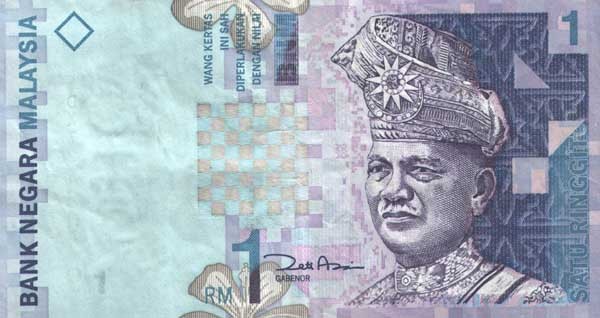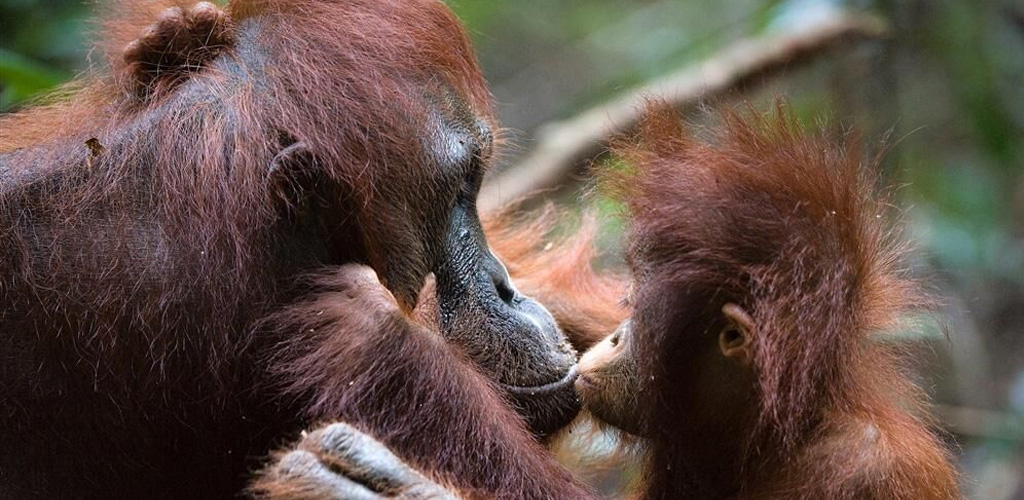Travel Notes
Touch down in Malaysia and you can feel the heat and humidity of the tropics. Land in Borneo and the experience is intensified, with steamy daytime temperatures and sporadic bursts of thunder. It seems impossible to call the climate pleasant... and impossible the rainforest of Borneo to be an easy place to travel. However, with a little pre-planning, and our careful organizing of your trip, traveling in Borneo isn't quite like the experience had by Eric Hansen, the first Westerner ever to walk across the island, a 2,400 mile trek avoiding snakes, poison blowdarts, and typhoid to mention a few dangers (his book, Stranger in the Forest is an engaging account). Beneath the rainforest canopy, Hansen found a hauntingly beautiful jungle, where snakes and frogs fly, pigs climb trees, primates send exotic calls into the night, giant carnivorous plants eat mice, and mushrooms glow at night. That same wonderful world awaits. But it's been made much more accessible. It's now even luxurious.
This page contains some basic information to help you plan a trip, both on Peninsula Malaysia, the islands, and the world's most pristine rainforest. It is not definitive information, just a starting point to get you prepared and our clients receive a detailed pre-departure pack, containing in-depth information on preparation for and travel in Borneo and Malaysia.
Climate and When to Go
The climate is remarkably constant across all of Malaysia and Borneo, meaning there's no clear-cut best and worst time to go but in general, the best time to visit Borneo is between March and October, when the weather is driest. Specially, the most pleasant months to visit are June and September, which tend to be a little quieter than the peak months of July and August, but still drier. It’s important to bear in mind that, due to the ecosystem, the rainforest receives rain showers all year round (which can be very refreshing after a long day’s hike in the heat).Expect it to be hot and humid in the day, with mid-afternoon downpours commonplace throughout the year.
Borneo's climate is as tropical as it gets, with temperatures ranging from a warm 72 F (22 C) in the evenings to a steamy 93 F (34 C) in the daytime. The northeastern state of Sarawak receives significant rainfall, with the Landas, as locals call the monsoon rains, falling between November to February. The northwestern state of Sabah, the most popular of the destinations in Borneo, is below the typhoon belt and is drier than Sarawak, although still marked by sporadic afternoon showers. Rainstorms can be intense but they're usually brief, followed by a beautiful fresh scent and a clearing of the muggy air.
Temperatures also vary little on Peninsula Malaysia, hovering around 86 F (30 C). Cloud cover increases throughout September as the weather makes its way toward the monsoon or rainy season. Late November to mid-February is the wettest time in Sarawak and the east of Peninsula Malaysia. On Sabah and Peninsula Malaysia's west coast, September and October sees the heaviest rains.
In general, the monsoon period should not deter your travel as rains are periodic and the weather is warm and humid all year around. One important exception is that itineraries visiting mountainous and island destinations can be affected during September and October as the afternoon downpours can continue for two to three hours.
Dates to Consider
Kuala Lumpur keeps you entertained throughout the year. In late January or early February, more than a million pilgrims form an eight-hour procession from the city to the Batu Caves during the Hindu festival of Thaipusam. The Malaysian Grand Prix brings the world's racing fans to the city in March or April. In May and June, the Colors of Malaysia Festival adds another dimension to a luxury Malaysia tour, a nationwide, month-long celebration of Malaysian culture, cuisine and craft. Then in October, the Malaysia International Gourmet Festival puts the country's best chefs under the spotlight with exclusive menus and special promotions.
June or July through September is ideal for turtle island, when the seas are calm and hatching by turtles is best to witness.
Pre-Departure Planning
Getting to Malaysia
Kuala Lumpur International Airport has evolved into one of the best in the world, offering multiple daily connections to destinations across mainland Malaysia, Borneo and the rest of Southeast Asia. It's almost certain that your trip will start here. The viable alternative is to fly into one of Southeast Asia's other hubs, before traveling onwards to your destinations – Singapore and Bangkok are a possibility.
Getting Around
It's four days on a boat from Peninsula Malaysia to Borneo. So we'd recommend that you fly. Thankfully, remote islands and rainforest are easily connected by Malaysia's excellent network of domestic flights. It's now easier than ever to enjoy an ambitious itinerary, using Kuala Lumpur as a gateway to reach some of Asia's final frontiers. Borneo is the world's third largest island so domestic flights remain the best way to get around once you're on the island. You'll travel by river and rugged dirt road through the rainforest, along with speedboats that take you to exotic islands. On Peninsula Malaysia and, surprisingly, in the state of Sabah, there are excellent sealed roads between the major towns.
What to Pack
On a Malaysia luxury tour you must pack for comfort. The heat and humidity doesn't lend itself to looking fashionable. Instead, you'll quickly come to revere those who wear the most practical of clothing. Pack at least twice as many clothes and underwear than normal. The humidity will leave you showering a few times a day and changing clothes just as often. Dry bags are a great investment, perfect for keeping a set of clothes dry in case you get caught in an afternoon shower. It's also the best way to protect your camera equipment. A rain jacket and poncho is essential, while a sarong is a perfect and comfortable wrap for many occasions.
In the hot and humid tropical climate you should pack light clothes. Think comfortable and loose-fitting clothes, particularly lightweight cotton or quick drying fabrics. Casual dress is typically with t-shirts and shorts, although lightweight pants like khakis offer sun and mosquito protection. Most trips require a significant amount of walking and we recommend sturdy trail shoes. A pair of flip-flops is convenient for short strolls.
Before travel we send all our clients a detailed packing list and are available to answer any questions they have. This is based on the specific destinations being visited. To start with, consider the type of luggage. A backpack works best as it's hard to roll suitcases on rugged roads and walks. It's best complemented by a day pack, preferably containing a smaller dry bag within.
Landing in Malaysia
Money Matters

Malaysia's currency is the Ringgit, abbreviated as MYR. As in most Asian countries, it is easy to change your money at the airport or any of the major cities. U.S. dollars can also be exchanged at some of the larger hotels and your guide can advise on places with the best exchange rates.
Credit cards are typically not accepted in local shops, restaurants and markets. However they are accepted at upmarket establishments, including hotels, fine dining restaurants and attractions. Visa and Mastercard are widely accepted, American Express less so. It's certainly worth traveling with enough local currency for incidental expenses.
ATMs exist in larger towns. Some are reliable but others are not, particularly on the island of Borneo. When landing in Kuala Lumpur it's recommended to stock up on cash before traveling to remote islands and rainforest.
Tipping
Reckon on tipping $5 – 10 per person per day for your guide, and about half that amount for your driver.
Electrical
Malaysia has 220-240 volt current, acceptable to almost all devices such as camera adapters, iPads, and laptops chargers. However, anything from home with a motor (such as hairdryer) is compatible only with 110 volts with short circuit.
The whole of Malaysia and Borneo uses three-pronged British-style plugs – with square prongs. Some hotel rooms have adapters but it's recommended to carry one from home, especially because adapters that can be purchased in Malaysia are of questionable quality.
Staying Connected
One of the great feelings of being in the jungle is to be cut off from the rest of the world, enveloped by a wilderness that stretches uninterrupted in every direction. In remote areas, expect to have very limited Wi-Fi or mobile phone access. However, on Peninsula Malaysia you'll find it easy to stay online and connected. The islands have more consistent Wi-Fi than the jungle, but it is of a low speed.
Malaysia uses a GSM network compatible with AT&T and T-Mobile phones. Check with your service provider regarding international coverage and make sure you understand exactly what you'll be charged for making calls and, if you have a smart phone, for using data. We can arrange a local sim card which has better reception and works out cheaper for making international calls.
We will also provide you with local phone numbers for your guides and contacts in the country, so friends and family always have a number they can reach you on in an emergency.
TRAVEL HEALTH & MEDICAL
DEHYDRATION & SUNBURN
The sun and humidity are strong throughout the year. Proper care against sunburn must be constantly taken. Dehydration and loss of salt through perspiration are two other common problems for the unprepared traveler. Drink plenty of fluids and replace your salt loss. Make sure you pack clothing suitable for a warm humid climate.
MOSQUITOES & LEECHES
Due to the constant humid climate, mosquitoes tend to be present throughout the year. The three most significant diseases transmitted by mosquitoes are Malaria, Dengue Fever and Japanese B Encephalitis. To repel mosquitoes, ticks, sand flies and other arthropods, apply an insect repellent containing DEET to your skin or clothing or the useful 3M Ultrathon repellent (buy repellent before arrival as local products are inferior).
The risk of malaria for most tourists visiting Peninsular Malaysia is extremely small. There is insignificant risk in Kuala Lumpur, Penang and other major cities. In East Malaysia, mainly off the coastal plains and towards the border areas, there is a slightly higher risk of malaria. [MALARIA RISK MAP]
If hiking in the jungle, consider bringing a pair of anti-leech socks.
YELLOW FEVER
There is no risk of yellow fever in Malaysia. A certificate of yellow fever vaccination is required for entry if you are coming from countries in South America or sub-Saharan Africa.
FOOD
Generally, the level of food hygiene throughout the country is high. However, make sure your food and drinking water are safe. Food from street vendors should be treated with care. Drink only bottled or boiled water, or carbonated (bubbly) drinks in cans or bottles. Avoid tap water, fountain drinks, and ice cubes. Bring along iodine tablets and portable water filters to purify water if bottled water is not available. For precaution, bring along anti-diarrhoea medication and an antibiotic prescribed by your doctor to self-treat moderate to severe diarrhea.
VACCINATIONS
Recommended vaccines to consider: MMR, Poliomyelitis (childhood booster), Tetanus (childhood booster), Typhoid (food & water borne diseases), Hepatitis A (food & water borne diseases).
For those venturing outside cities and towns, it is recommended to receive Hepatitis B, Rabies, Japanese B Encephalitis, Tuberculosis and Meningitis. For those visiting Sabah and Sarawak. Currently, a Malaria prophylaxis is not recommended per low risk in Borneo but consult with your physician. Please always contact your physician or travel doctor for a comprehensive consultation.
Borneo Packing List
Contact us by the link below to receive our PDF Borneo travel guide and packing list.
HOSPITALS & LOCAL CLINICS
SANDAKAN
Duchess of Kent Hospital
Address: KM 3.2, Jalan Utara, 90000 Sandakan, Sabah, Malaysia
Hours: Open 24 hours
Phone: +60 89-248 600

